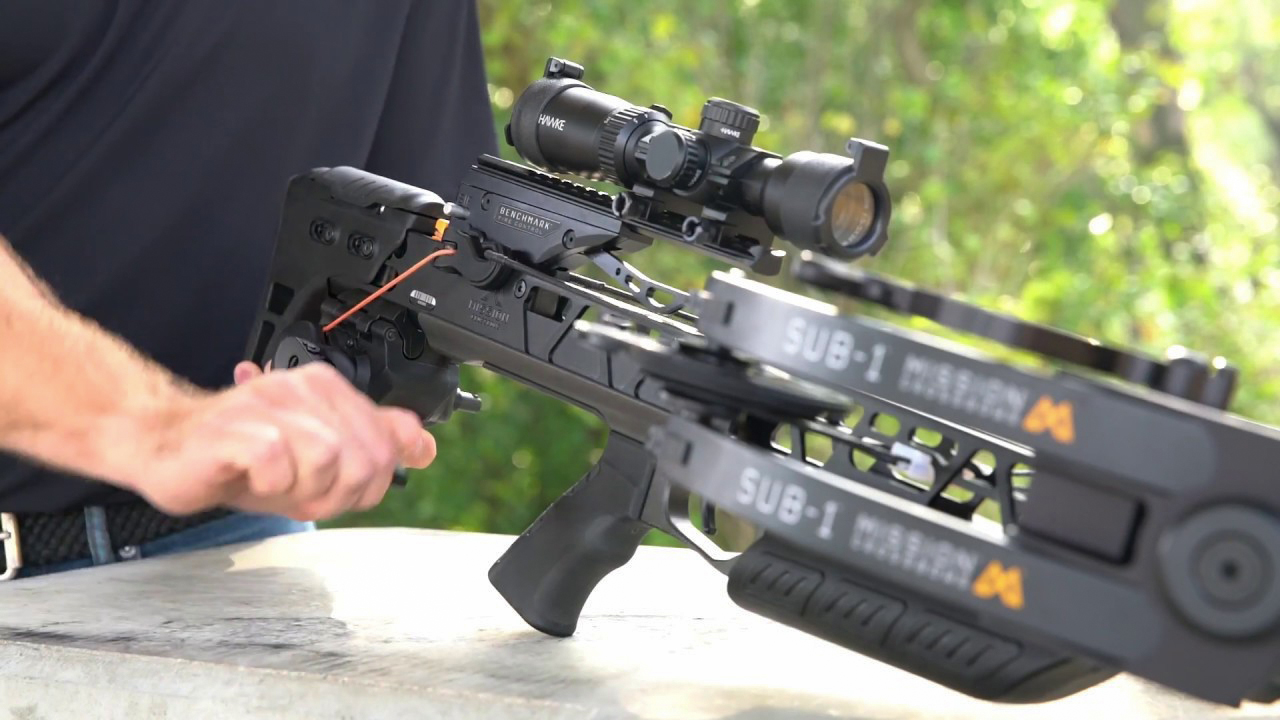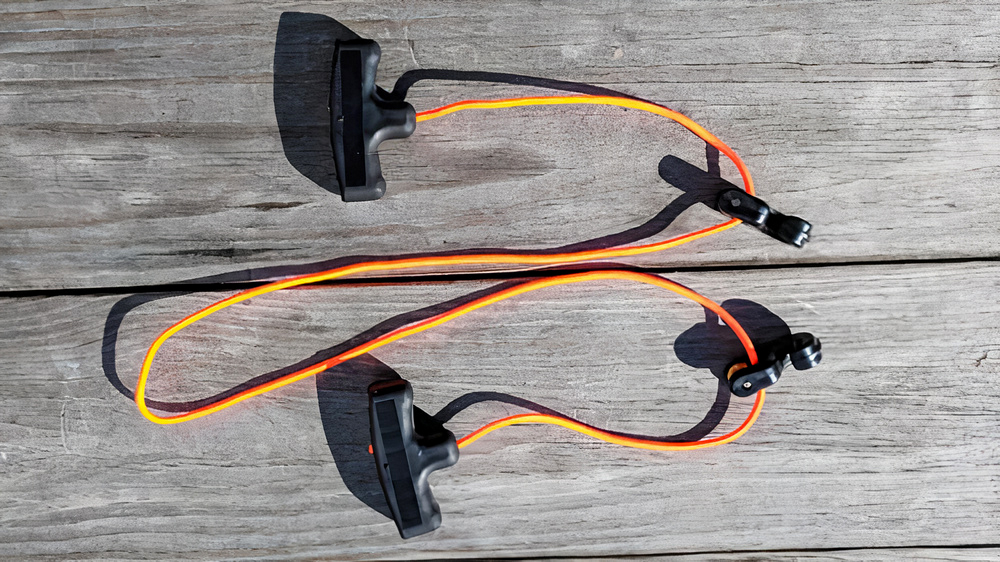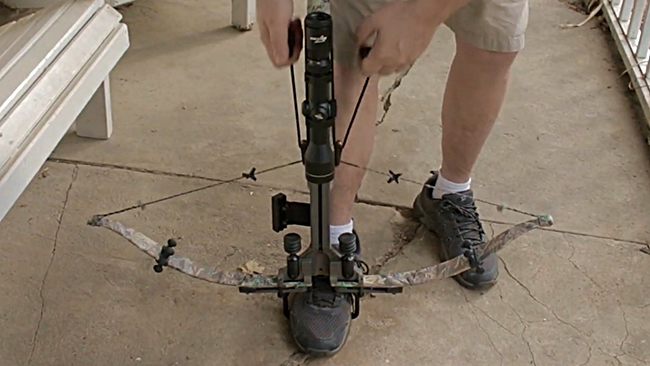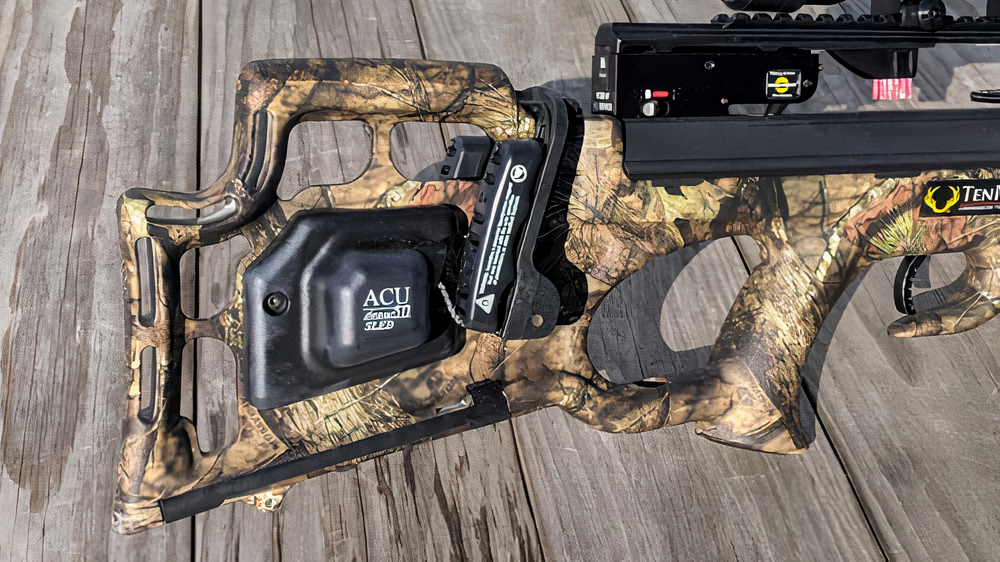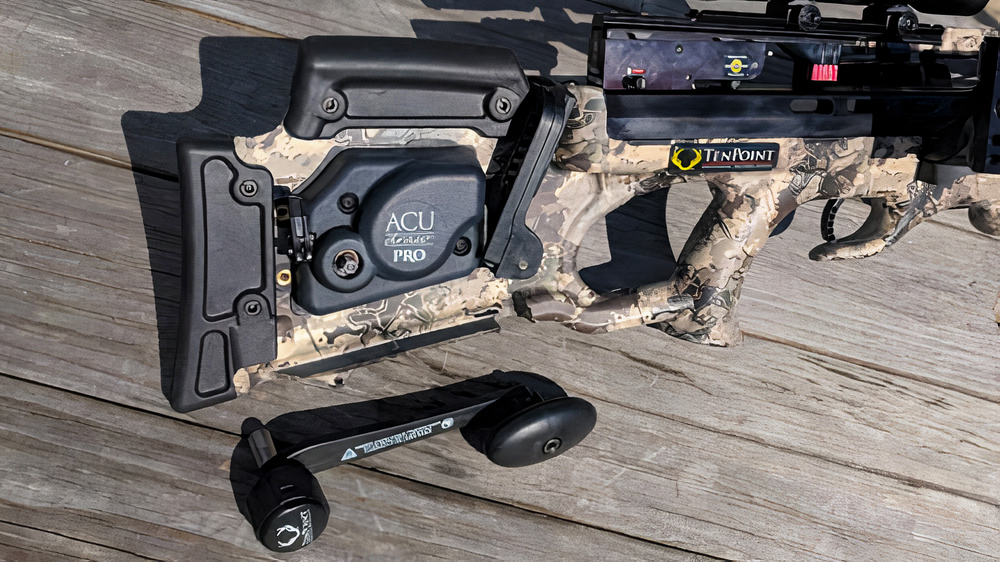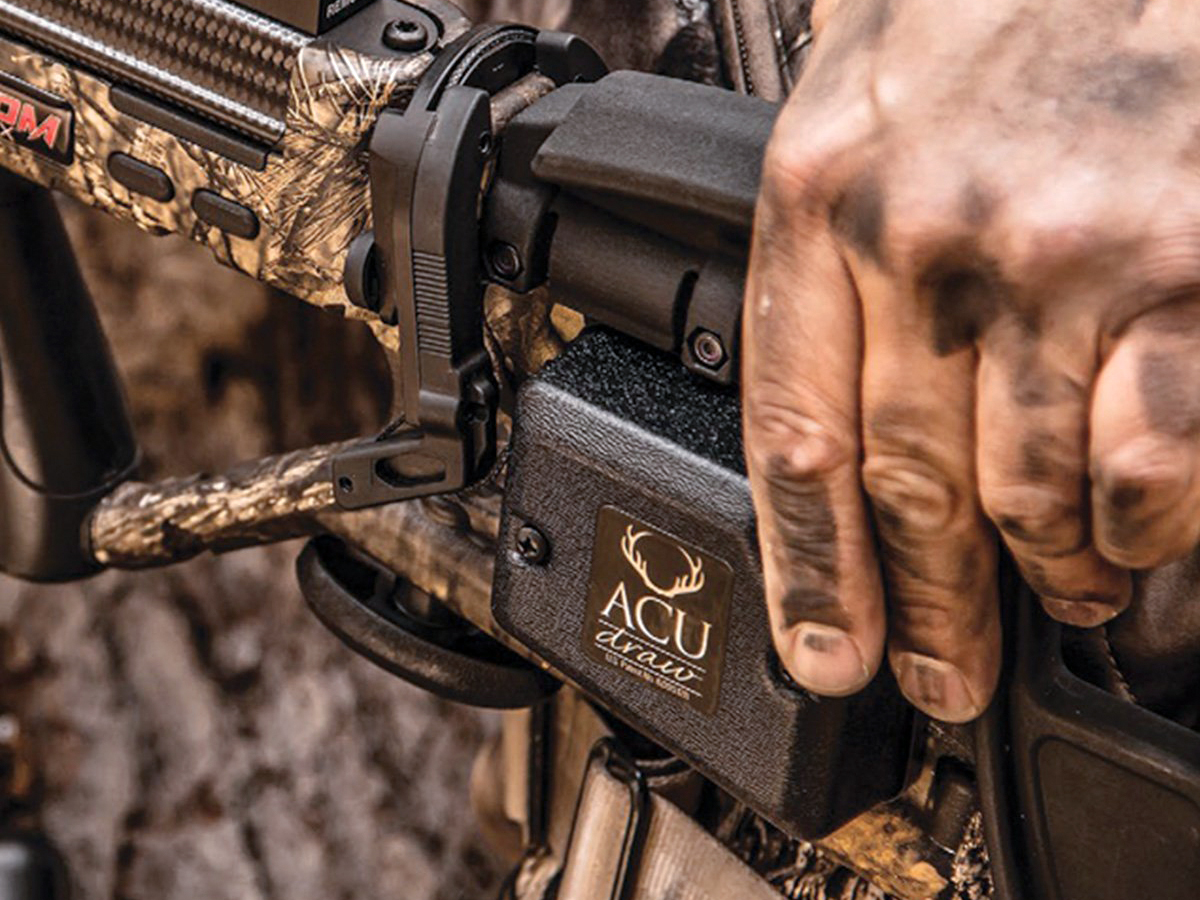Ever wondered how it’s possible to cock a crossbow that has a draw weight of 100 pounds or more?
Well, if you don’t know already, there are various cocking mechanisms that aid in drawing a crossbow by reducing the amount of force required to pull the bowstrings. Let’s have a look at each of them!
Contents
Standalone Rope Cocking Mechanisms
The “standalone rope” is one of the simplest and most common cocking mechanisms among hunters. It is extremely lightweight and portable as well as easy on the wallet.
The whole anatomy of a standalone rope cocking device includes handles, hooks, and a rope. The only downside for most hunters is that it cannot be mount on the crossbow.
This type of locking mechanism works by attaching the hooks of the rope cocker to the crossbow string on either side of the stock. The front of the crossbow has to be anchored on the ground.
At the same time, the rope has to be leveraged at the back of the stock. Once everything is in position, you have to pull up using the handles. As you keep pulling, the string will eventually get latched.
A standalone rope cocking mechanism is suitable to reduce the draw weight of a crossbow by 50%.
So, if your crossbow has a draw weight of 200 pounds, these cocking mechanisms can bring it down to 100 pounds. However, this can also be a drawback for hunters who use heavy-duty crossbows with draw weights around 400 pounds.
More importantly, people with physical impairments find it hard to use this type of locking mechanism.
It requires two hands and both feet as you have to anchor the crossbow and pull back. But if you are physically fit and dealing with moderate draw weight, it will work perfectly.
Stock-Integrated Rope Cocking Mechanisms
The stock-integrated rope cocking mechanisms are no different than the standalone ones in that they use the same rope, handles, and hooks. More so, they even reduce the draw weight by the same percentage, i.e., 50%.
However, where it differs is the design and working mechanism. This type of cocking device is designed to be mount in the stock. You must be wondering where the ropes go.
The ropes are actually retracted back into the housing of the cocking device. Thus, you can get them out every time the need arises. Similarly, the handles and hooks have their own secure space for storage when not in use.
The stock-integrated rope cocking mechanism is better than standalone because you don’t have to carry it separately. Moreover, it is faster to use as it is right there on the crossbow.
The ropes on this also have no chance of getting tangled up with other gear in the bag as they have their own storage space.
People who have no physical impairments and deal with moderate draw weights can make the most out of this type of locking mechanism.
Crank Cocking Mechanisms
The crank cocking mechanism is often referred to as the machinal cocking mechanism. It basically works in a similar manner as a rope cocking device.
However, with this one, you don’t have to use your own strength. Rather, a crank enables you to pull up the bowstring.
This type of cocking device works only when integrated into the crossbow. You can either get a crossbow that has a built-in crank cocking device or get it separately for a crossbow without one.
To cock a crossbow using this cocking mechanism, you have to follow the directions laid out by the manufacturer.
First, get in position with your foot through the foot claw. Next, attach the hooks to the bowstring and use the crank to pull it up. When you hear cocking noise, make sure to put on the safety before removing the hooks.
Finally, wind up the lines of the cocking device until they get back in their original position.
The major advantage of the crank cocking mechanisms is that they allow you to draw heavier weights. You don’t really have to use any strength using these cocking mechanisms.
They are also extremely simple to operate and often come built into the crossbow. In fact, some of the best crossbows for hunting have a crank cocking mechanism.
However, with advantages come drawbacks as well. As much good as it is, a crank cocking device is not only heavy but also expensive. If you get one separately, it just adds weight to the equipment you have to carry around.
AcuDraw Patented Cocking Device
If you are looking for a mechanism that allows you to cock a crossbow accurately and effortlessly, there is nothing better than AcuDraw.
TenPoint has patented the device because of how incredible it is. It takes away the hassle of handling a cocking device separately as it is fully integrated into the stock.
Everything has a storage space, so nothing is dangling out. Anyone from a kid to an old age man with minimal strength can use it to cock a crossbow.
It takes no more than the strength of an index finger to operate.
AcuDraw vs. Traditional Rope Cocker
I have already mentioned above how a traditional rope cocker works. However, TenPoint took this a step further in an attempt to make crossbow cocking more convenient by introducing AcuDraw.
AcuDraw uses the same rope cocking mechanisms but allows you to integrate them into the buttstock.
The ropes are used to cock the device, and once cocked, they simply retract into the housing space. More importantly, AcuDraw allows you to perfectly center the bowstring while cocking every single time.
A traditional rope cocker first cannot be fully integrated into a crossbow. Secondly, it does not allow for accurate cocking every time due to the issue of centering the bowstring.
How to Use
The first step to use the AcuDraw cocking device is to put the safety knob on fire. Next, you need to get the claw out and connect it to the bowstring. Once done, put the crossbow on its foot stirrup.
As you take the position, start cocking the crossbow using AcuDraw. It usually takes 20-30 turns for it to fully cock.
Stop cocking when the trigger safety moves to safe. To remove the claw, you must first release a little bit of tension on the bowstring to avoid damaging the mechanism.

Hi, my name is Michael Goodman. As a skilled hunter and a man of the field, I will show you some sophisticated, intelligent, and useful hunting methods and techniques.

